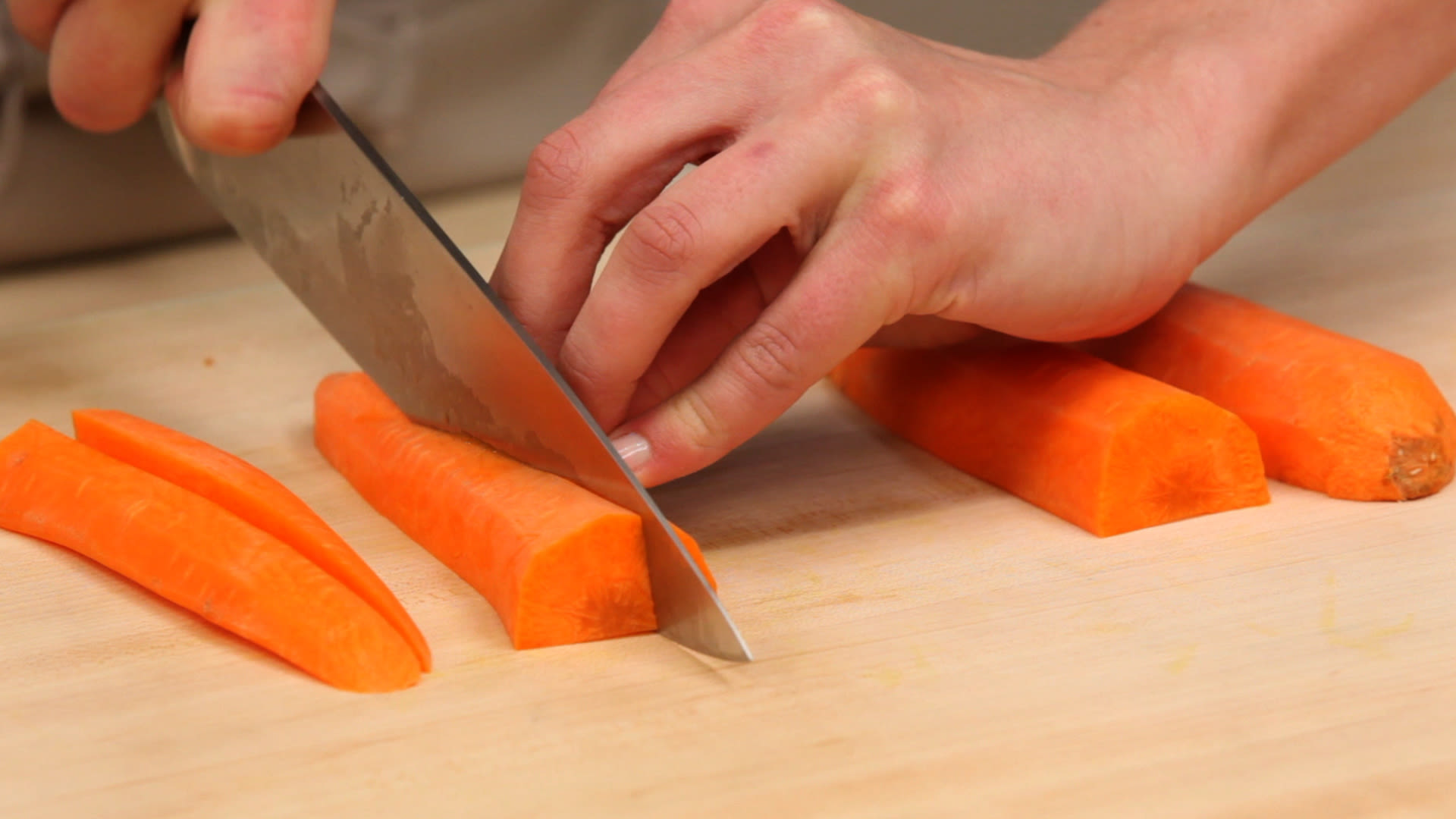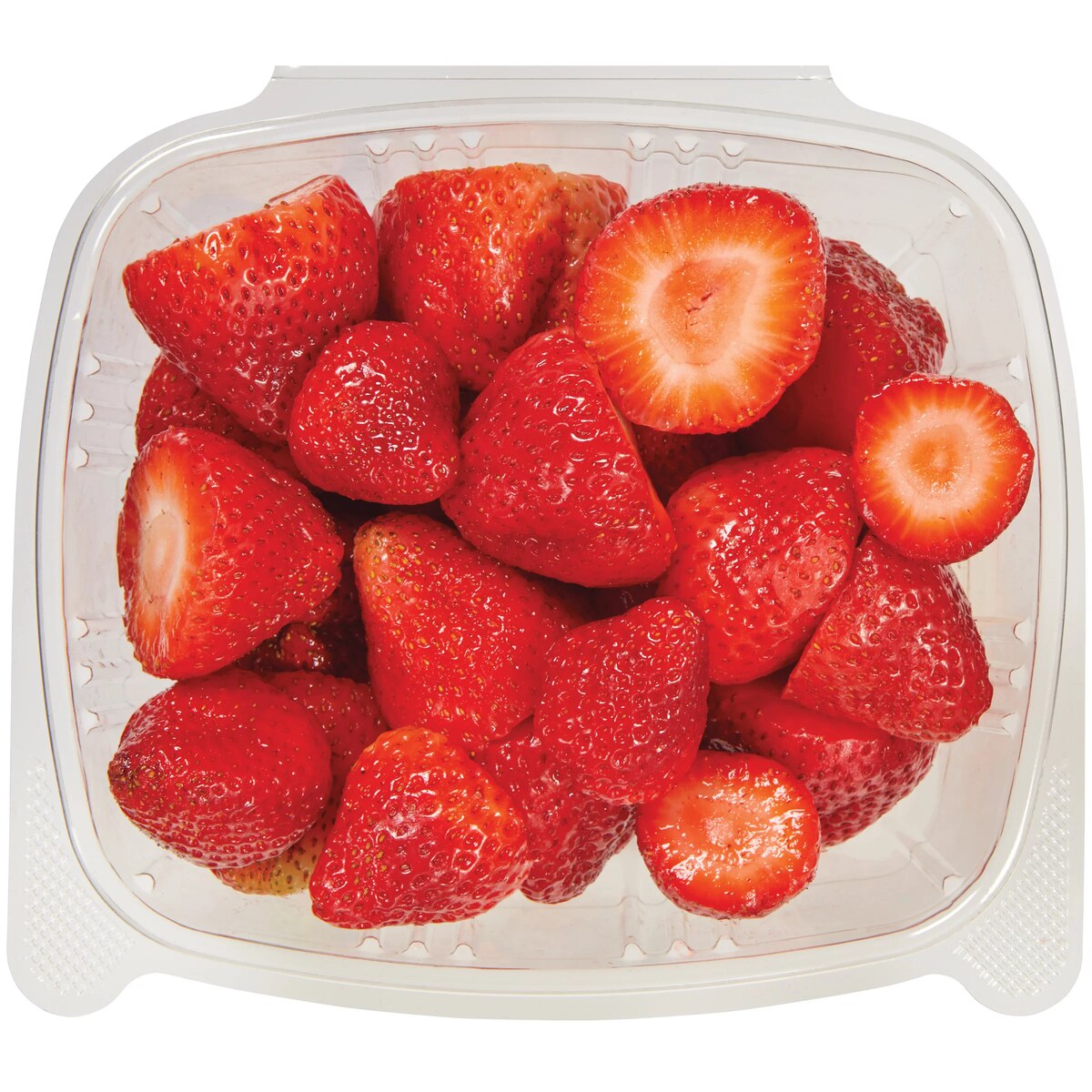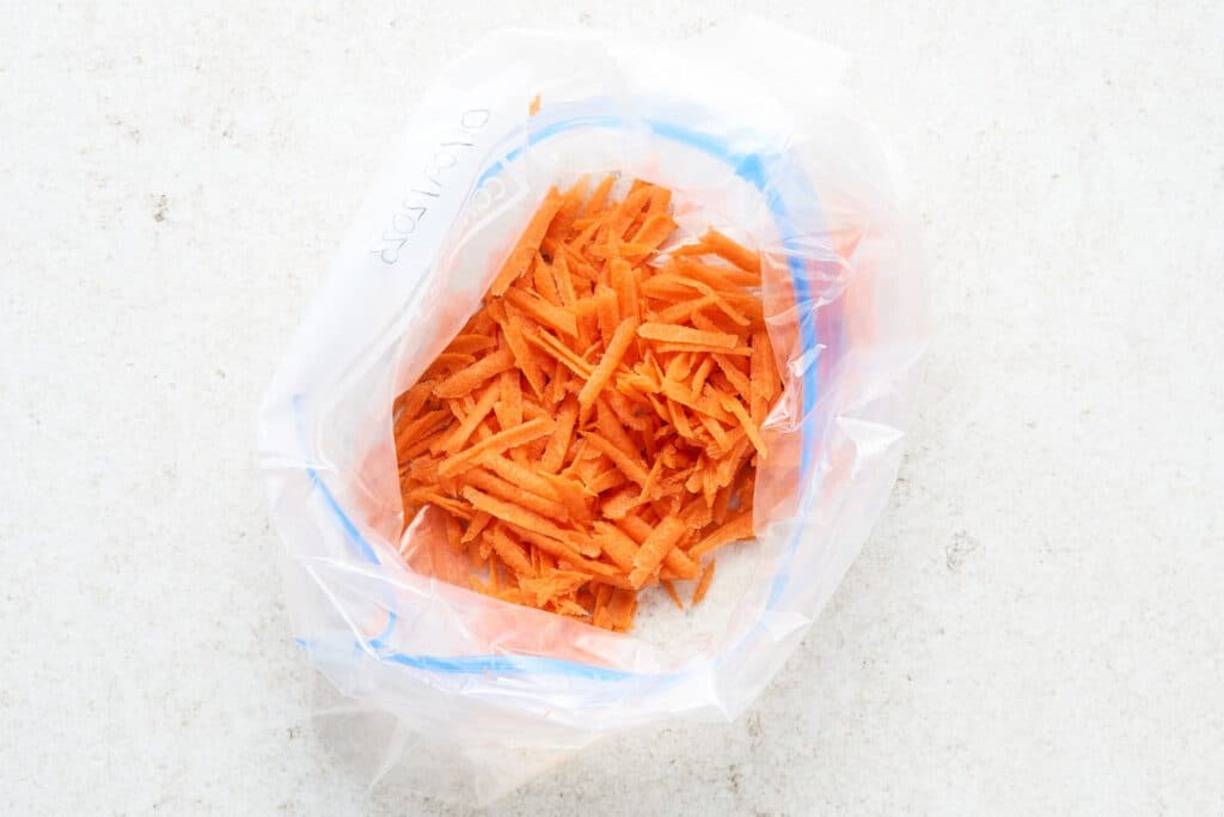

Articles
How To Store Chopped Carrots
Modified: February 26, 2024
Learn the best methods for storing chopped carrots with our informative articles. Keep your carrots fresh and ready to use for longer periods of time.
(Many of the links in this article redirect to a specific reviewed product. Your purchase of these products through affiliate links helps to generate commission for Storables.com, at no extra cost. Learn more)
Introduction
Welcome to our comprehensive guide on how to store chopped carrots. Whether you have an abundance of fresh carrots from the garden or you simply want to save time by prepping them ahead of time, properly storing chopped carrots is important to maintain their freshness and flavor. In this article, we will explore different methods for storing chopped carrots, including both refrigeration and freezing techniques.
Carrots are a versatile and nutritious vegetable that can be enjoyed raw, cooked, or added to various dishes. However, once carrots are chopped, they are more susceptible to moisture loss and oxidation, which can lead to spoilage and a decline in quality. By following the right storage techniques, you can extend the shelf life of your chopped carrots and ensure they retain their taste, texture, and nutritional value for longer.
Before we delve into the storing methods, it’s important to start with the right carrots and proper preparation. When choosing carrots for chopping, look for ones that are firm, smooth, and free from blemishes or signs of decay. It’s best to opt for carrots with their tops still attached, as this helps to retain moisture and freshness. Once you have selected the perfect carrots, it’s time to get them ready for storage.
To prepare the carrots for chopping, start by removing the greens or tops and gently scrubbing them under running water to remove any dirt or impurities. You can use a vegetable brush for tougher spots. Once cleaned, pat them dry with a clean kitchen towel or paper towels to remove excess moisture. Now, it’s time to move on to the chopping process.
When it comes to chopping carrots, there are several options depending on your preference and the intended use. You can cut them into rounds, dice them into cubes, or julienne them into thin strips. The size and shape of the chopped carrots can depend on the recipe or dish you plan to use them in. However, it’s important to ensure that the pieces are uniform in size, as this will promote even cooking or freezing.
With your carrots chopped and ready to store, let’s explore the different methods for preserving their freshness. Whether you plan to use them within a few days or want to freeze them for longer-term storage, we have you covered. Read on to discover the best practices for storing freshly chopped carrots, as well as blanched carrots for freezing.
Key Takeaways:
- Properly storing chopped carrots is crucial for maintaining their freshness and flavor. Whether refrigerating or freezing, following the right methods ensures longer shelf life and optimal taste for your favorite recipes.
- Choosing fresh, high-quality carrots and employing proper storage techniques can extend the shelf life of chopped carrots. From refrigeration to blanching and freezing, there are various methods to preserve their taste and nutritional value.
Read more: How To Chop Carrots In Food Processor
Choosing and Preparing Carrots
Before you start storing chopped carrots, it’s important to select the right ones and prepare them properly. Choosing high-quality carrots and following the correct preparation techniques will help ensure optimal freshness and flavor. Here are some tips to keep in mind:
- Choose fresh carrots: Look for carrots that are firm, smooth, and vibrant in color. Avoid carrots that are soft, wilted, or have moldy spots.
- Opt for carrots with tops: Carrots with their greens or tops still intact are preferable as the tops help retain moisture and freshness.
- Clean the carrots: Before chopping, wash the carrots thoroughly under running water. Use a vegetable brush to remove any dirt or debris.
- Trim and discard the tops: Cut off the tops of the carrots, as they are not suitable for long-term storage.
- Dry the carrots: After washing, pat the carrots dry with a clean kitchen towel or paper towels to remove excess moisture. This helps prevent moisture buildup and potential spoilage during storage.
Once you’ve chosen and prepared your carrots, you can move on to chopping them according to your desired size and shape. Remember that uniformity in size is important for even cooking or freezing. You can cut them into rounds, dice them into cubes, or julienne them into thin strips, depending on your recipe or preference.
By selecting fresh carrots and following proper cleaning and preparation techniques, you are setting yourself up for success when it comes to storing chopped carrots. Now that you have your chopped carrots ready, it’s time to explore the various methods for storing them to maintain their freshness and flavor.
Storing Freshly Chopped Carrots
After you have chopped your carrots, it’s important to store them correctly to maintain their freshness and prevent spoilage. Here are a few methods for storing freshly chopped carrots:
- Refrigeration: If you plan to use the chopped carrots within a few days, storing them in the refrigerator is the best option. Transfer the chopped carrots into an airtight container or a resealable plastic bag. Make sure to remove any excess air from the bag before sealing it. Label the container or bag with the date to keep track of their freshness. Place the container or bag in the refrigerator’s vegetable crisper drawer, which has a higher humidity level, to help preserve the carrots’ moisture. Freshly chopped carrots can typically be stored in the refrigerator for up to 5 days.
- Water Method: Another method to store freshly chopped carrots is by submerging them in water. Fill a container with cold water and place the chopped carrots in it. Ensure that the carrots are completely submerged. This method helps prevent moisture loss and keeps the carrots crisp. Change the water every couple of days to maintain freshness. However, keep in mind that this method is ideal for short-term storage and should be used if you plan to use the carrots within 3 to 4 days.
- Fridge with Damp Paper Towel: To further extend the shelf life of freshly chopped carrots in the refrigerator, you can also place a damp paper towel in the container or bag with the carrots. The damp paper towel helps retain moisture and keeps the carrots from drying out.
When using any of the above methods, it’s essential to check the carrots for any signs of spoilage before consuming them. If you notice any mold, foul smell, or sliminess, discard the chopped carrots immediately.
By following these storing methods, your freshly chopped carrots will remain crisp, flavorful, and ready to use in your favorite recipes. Whether you’re adding them to salads, stir-fries, soups, or as a healthy snacking option, properly stored chopped carrots will enhance the taste and nutrition of your meals.
Storing Blanched Carrots
If you have a surplus of chopped carrots or want to store them for a longer period, blanching the carrots before storing is an excellent option. Blanching involves briefly boiling the carrots and then rapidly cooling them to halt the enzymatic activity that can cause deterioration. Here’s how you can store blanched carrots:
- Blanching Process: Start by bringing a pot of water to boil. While the water is heating, prepare an ice bath by filling a large bowl with water and adding ice cubes. Once the water is boiling, place the chopped carrots in a blanching basket or a metal strainer and carefully lower them into the boiling water. Blanch small carrot pieces for about 2 minutes and larger pieces for 3 to 4 minutes. After the blanching time is complete, quickly transfer the carrots to the ice bath to cool them rapidly. This helps retain their vibrant color and crisp texture.
- Draining and Drying: Drain the blanched carrots well to remove excess water. Spread them out on a clean kitchen towel or paper towels and pat them dry gently. Excess moisture can lead to freezer burn or loss of quality during storage.
- Freezer Container: Pack the dried and cooled blanched carrots into airtight freezer-safe containers or resealable freezer bags. Label the containers or bags with the date of preparation to keep track of their freshness.
- Freezer Placement: Place the containers or bags of blanched carrots in the freezer, ensuring they are arranged in a single layer. This allows for faster freezing and easier portioning when needed.
Blanched carrots can be stored in the freezer for up to 12 months. However, for the best quality, it is recommended to consume them within 8 to 10 months.
When you’re ready to use the blanched carrots, remove the desired amount from the freezer and thaw them using the proper techniques.
Follow these steps, and you can enjoy the freshness and vibrant flavor of the blanched carrots long after their peak season.
Store chopped carrots in an airtight container or resealable bag in the refrigerator. Adding a paper towel to absorb excess moisture can help keep them fresh for longer.
Freezing Chopped Carrots
Freezing is an excellent method for long-term storage of chopped carrots, preserving their taste and nutritional value. Here’s how to freeze chopped carrots:
- Preparation: Start by selecting fresh carrots and chopping them into your desired size and shape. It is recommended to blanch the carrots before freezing to help maintain their quality. Blanching involves briefly boiling the carrots and then rapidly cooling them in an ice bath to halt enzymatic activity. However, if you prefer to skip the blanching step, you can freeze the carrots directly, although they may have a slightly different texture once thawed.
- Blanching Process (Optional): To blanch the carrots, bring a pot of water to boil. While the water is heating, prepare an ice bath by filling a large bowl with water and adding ice cubes. Once the water is boiling, place the chopped carrots in a blanching basket or a metal strainer and carefully lower them into the boiling water. Blanch small carrot pieces for about 2 minutes and larger pieces for 3 to 4 minutes. After the blanching time is complete, quickly transfer the carrots to the ice bath to cool them rapidly.
- Draining and Drying (Optional): Drain the blanched carrots well to remove excess water. Spread them out on a clean kitchen towel or paper towels and pat them dry gently. This step is essential to prevent ice crystals and ensure better texture once thawed. If you are freezing unblanched carrots, simply drain them and pat them dry.
- Freezer Bags or Containers: Transfer the chopped carrots into airtight freezer bags or freezer-safe containers. Squeeze out any excess air from the bags before sealing them tightly. If using containers, ensure they are properly sealed to prevent freezer burn.
- Label and Freeze: Label the bags or containers with the date and contents for easy identification. Place the bags or containers in the freezer, arranging them in a single layer initially to allow for faster freezing. Once frozen, they can be stacked to save space.
Frozen chopped carrots can generally be stored for up to 12 months in the freezer. However, for the best quality, it is recommended to consume them within 8 to 10 months.
When you’re ready to use the frozen chopped carrots, remove the desired amount from the freezer and thaw them using the proper techniques.
By following these steps, you can conveniently store chopped carrots in the freezer and have them readily available for use in various recipes and dishes throughout the year.
Read more: How To Store Chopped Onion
Proper Thawing Techniques
Thawing frozen chopped carrots properly is essential to preserve their texture and flavor. Here are some recommended thawing techniques:
- Refrigerator Thawing: The safest and recommended method for thawing chopped carrots is in the refrigerator. Simply transfer the frozen chopped carrots from the freezer to the refrigerator and let them thaw slowly overnight or for several hours. This gentle thawing process helps preserve the texture and prevents any loss of flavor. Once thawed, you can use the carrots as fresh or cooked ingredients in your recipes. Thawed chopped carrots can be stored in the refrigerator for up to 2 to 3 days.
- Cold Water Thawing: If you need to thaw the chopped carrots more quickly, you can use the cold water method. Place the frozen carrots in a leak-proof plastic bag, ensuring there are no holes. Submerge the bag in a bowl of cold water and gently agitate the water every 30 minutes to encourage even thawing. Change the water every 30 minutes to keep it cold. This method typically takes about 1 to 2 hours, depending on the amount and size of the frozen carrots. Once thawed, use them immediately.
- Microwave Thawing (for immediate use): If you need to use the chopped carrots immediately, you can thaw them in the microwave. Place the frozen carrots in a microwave-safe bowl and defrost them using the microwave’s defrost setting or low power level. Be sure to follow the microwave’s instructions and check the carrots frequently to avoid overcooking. Once partially thawed, you can finish cooking the carrots according to your recipe.
Regardless of the thawing method you choose, it’s important to avoid refreezing previously thawed chopped carrots. Once thawed, they become more susceptible to bacterial growth and may not have the same quality as freshly frozen carrots.
By following these proper thawing techniques, you can safely and effectively bring your frozen chopped carrots back to their fresh state and incorporate them into your favorite recipes with ease.
Conclusion
Properly storing chopped carrots is essential for maintaining their freshness, flavor, and nutritional value. Whether you plan to use them within a few days or want to store them for longer periods, there are different methods available to ensure their longevity.
When choosing and preparing carrots, select fresh ones that are firm, smooth, and free from blemishes. Remove the tops and wash the carrots thoroughly before chopping. Maintaining uniformity in size and shape will help promote even cooking and freezing.
For short-term storage, refrigeration is the ideal method. Place the chopped carrots in an airtight container or resealable bag, and store them in the vegetable crisper drawer of your refrigerator for up to 5 days. You can also use the water method or add a damp paper towel to help retain moisture.
Blanching the carrots before storage is recommended for long-term storage. This process involves briefly boiling the carrots and then cooling them rapidly. After blanching, drain and dry the carrots before packing them into freezer-safe containers. These blanched carrots can be stored in the freezer for up to 12 months.
If you prefer not to blanch the carrots, you can freeze them directly, though the texture may be slightly different once thawed. Pack the chopped carrots into airtight freezer bags or containers, remove excess air, and label them. They can generally be stored in the freezer for up to 12 months.
When it’s time to use your frozen chopped carrots, choose an appropriate thawing method. Thawing in the refrigerator is the safest method, allowing the carrots to thaw slowly and maintain their texture. Cold water thawing or microwave thawing are faster alternatives, but ensure the carrots are used immediately to prevent bacterial growth.
In conclusion, by following the proper storage techniques for chopped carrots, you can enjoy their fresh taste and nutritional benefits even after days or months. So go ahead, chop those carrots, store them correctly, and have them readily available for a variety of delicious recipes!
Frequently Asked Questions about How To Store Chopped Carrots
Was this page helpful?
At Storables.com, we guarantee accurate and reliable information. Our content, validated by Expert Board Contributors, is crafted following stringent Editorial Policies. We're committed to providing you with well-researched, expert-backed insights for all your informational needs.















0 thoughts on “How To Store Chopped Carrots”